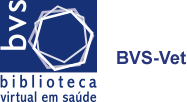Insights into early embryonic development - a personal assessment based on 30 years of experience
Besenfelder, Urban
Abstract The collection of early embryonic stages from the donor animal and their in vitro development through to transfer back into a recipient animal has gained enormous importance both in understanding embryo physiology and in its application for breeding purposes. Whereas not so long ago the focus was on embryo retrieval after superovulation from the donor animal, oocyte collection by follicular puncture followed by in vitro production (IVP) is now the main source of bovine embryos. However, as recent years of intensive research have shown, it appears to be very difficult to reproduce the extreme complex in vivo processes under laboratory conditions. Consequently, the quality/developmental capacity of embryos available for cryopreservation/storage/transport and transfer still lags behind that of embryos derived directly from animals. Embryo collection in bovine MOET programs is limited to the success of the animal's hormone treatment, embryo collection itself, and transfer on Day 7. IVP largely bypasses these developmental steps in the animal and focuses primarily on the presence of healthy follicular waves. It uses follicular puncture (ovum pick-up: OPU) to obtain immature oocytes, which undergo a three-stage in vitro process to produce embryos that are transferred to the uterus on Day 7. However, it is now known that important processes take place in the oviduct that have a lasting effect on the further development of the embryo. In animals, however, the development of embryos in the oviduct has not yet received sufficient attention. This review will present some highlights of the use of early embryonic stages from the oviduct in different species, but the scientific work mentioned is also largely based on the recent presentation at the AETE 2023 conference in Heraklion, Greece.
Texto completo